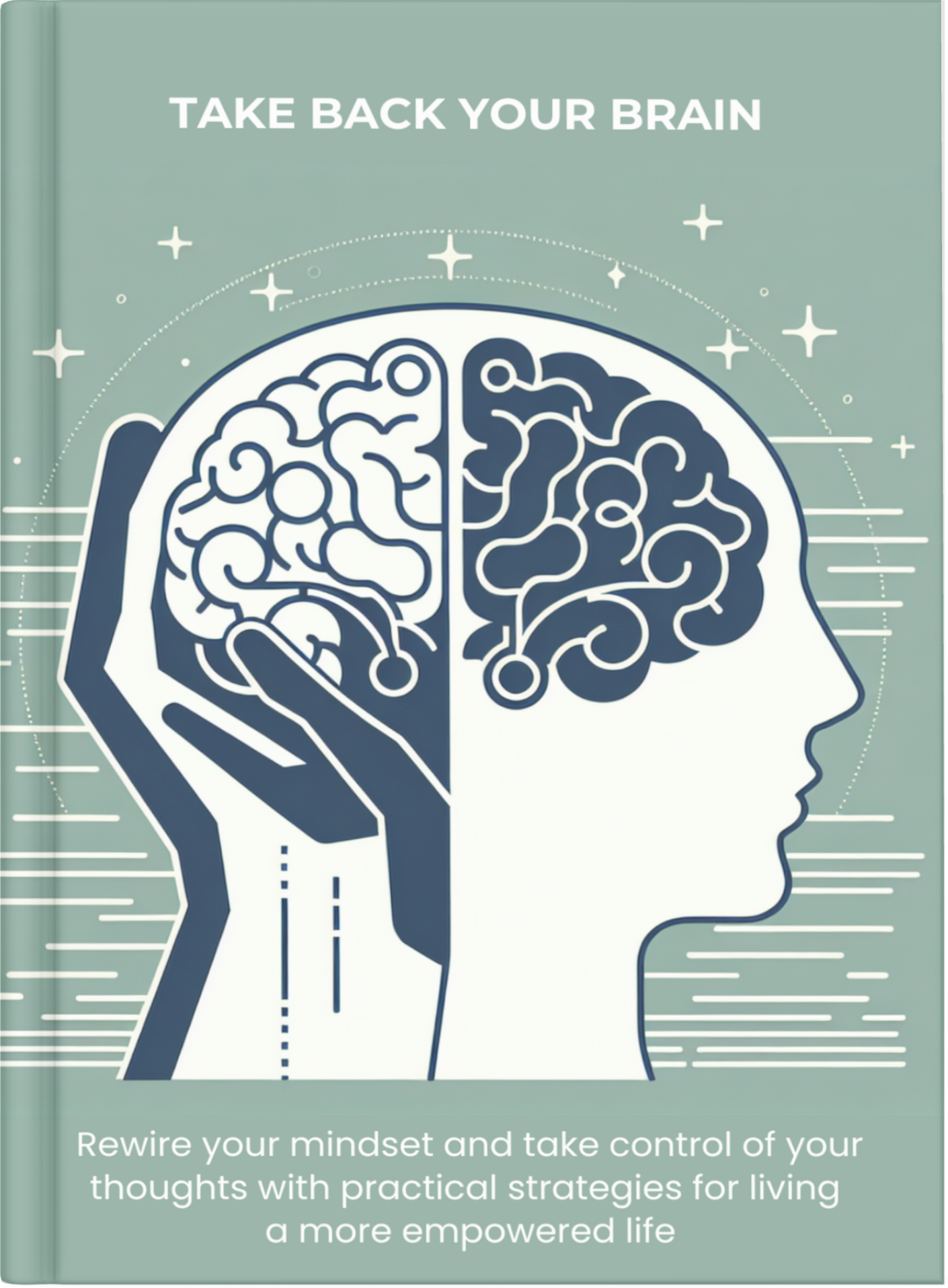
Take Back Your Brain
Kara Loewentheil
Take Back Your Brain by Kara Loewentheil is a self-help book that focuses on empowering individuals to reclaim control over their thoughts and emotions. The book provides practical strategies for managing negative self-talk, overcoming limiting beliefs, and fostering a more positive and productive mindset. Loewentheil combines cognitive psychology with actionable advice to help readers transform their mental habits and improve their overall well-being.
0:000:00
Keypoint 1: Understanding the Brain's Default Mode
The brain's default mode is a term used to describe the brain's natural state of activity when it is not focused on the outside world. This default mode network (DMN) is a group of interconnected brain regions that become active when we are at rest, daydreaming, or engaging in self-referential thoughts. Understanding the brain's default mode is crucial because it often dictates our automatic thoughts and behaviors. When left unchecked, the DMN can lead to negative self-talk, rumination, and a focus on past regrets or future anxieties.
To take back control of your brain, it is essential to become aware of when your DMN is active and how it influences your thoughts. One way to do this is through mindfulness practices. Mindfulness involves paying attention to the present moment without judgment. By practicing mindfulness, you can observe your thoughts as they arise and recognize patterns of negative thinking. This awareness allows you to interrupt the automatic processes of the DMN and redirect your focus to more constructive thoughts.
Another strategy to manage the brain's default mode is cognitive restructuring. This involves identifying and challenging irrational or unhelpful thoughts. For example, if you notice that your DMN is causing you to dwell on a past mistake, you can challenge this thought by reminding yourself of what you have learned from the experience and how it has helped you grow. Cognitive restructuring helps to reframe negative thoughts into more positive and realistic ones, reducing the impact of the DMN on your mental state.
Additionally, engaging in activities that require focused attention can help to deactivate the DMN. Activities such as solving puzzles, learning a new skill, or engaging in creative pursuits can shift your brain's activity away from the default mode and towards more goal-directed processes. By regularly engaging in such activities, you can train your brain to spend less time in the default mode and more time in a productive and positive state.
In summary, understanding the brain's default mode is the first step in taking back control of your thoughts and emotions. By practicing mindfulness, engaging in cognitive restructuring, and participating in focused activities, you can reduce the influence of the DMN and foster a more positive and productive mindset.
To take back control of your brain, it is essential to become aware of when your DMN is active and how it influences your thoughts. One way to do this is through mindfulness practices. Mindfulness involves paying attention to the present moment without judgment. By practicing mindfulness, you can observe your thoughts as they arise and recognize patterns of negative thinking. This awareness allows you to interrupt the automatic processes of the DMN and redirect your focus to more constructive thoughts.
Another strategy to manage the brain's default mode is cognitive restructuring. This involves identifying and challenging irrational or unhelpful thoughts. For example, if you notice that your DMN is causing you to dwell on a past mistake, you can challenge this thought by reminding yourself of what you have learned from the experience and how it has helped you grow. Cognitive restructuring helps to reframe negative thoughts into more positive and realistic ones, reducing the impact of the DMN on your mental state.
Additionally, engaging in activities that require focused attention can help to deactivate the DMN. Activities such as solving puzzles, learning a new skill, or engaging in creative pursuits can shift your brain's activity away from the default mode and towards more goal-directed processes. By regularly engaging in such activities, you can train your brain to spend less time in the default mode and more time in a productive and positive state.
In summary, understanding the brain's default mode is the first step in taking back control of your thoughts and emotions. By practicing mindfulness, engaging in cognitive restructuring, and participating in focused activities, you can reduce the influence of the DMN and foster a more positive and productive mindset.

